The Real Market With Chris Rising – Ep. 20 Lisa Picard
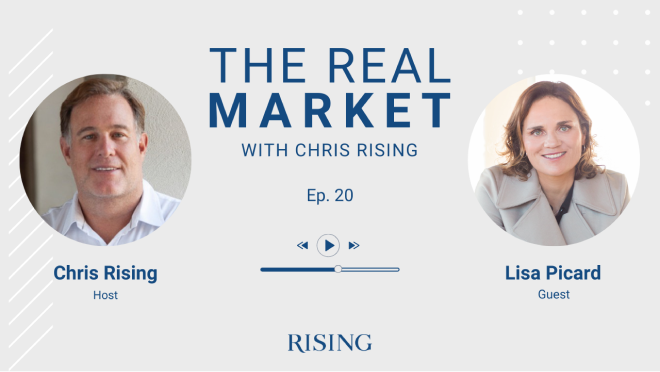
The Real Market With Chris Rising – Ep. 20 Lisa Picard
Podcast: Play in new window | Download
0:00:50 CR: Today, I’m having a very interesting conversation with Lisa Picard. She’s the CEO and President of EQ, which many of you may know as the old EOP or Equity Office Properties. Lisa is an engaging speaker. She has an unbelievably strong understanding of technology and a sense of place, and it’s just a really exciting conversation that I’m really, really excited to share with you all.
0:01:21 CR: Welcome to The Real Market with Chris Rising. I’m very excited to have with me, Lisa Picard, who’s the President and CEO of EQ office. For those of us who’ve been in the business a while, we know it as Equity Office, something that was founded many years ago by Sam Zell and has had many iterations but I’m really excited to have Lisa on the podcast today. She’s made some really impactful changes in a short period of time, and Lisa, thanks for being a part of the podcast.
0:01:50 Lisa Picard: Thanks for having me. It’s good to be here.
0:01:51 CR: Well, great. I think a lot of people who’ve been in the business know the roots of what was once known as Equity Office, but I wanna give you just the platform at the beginning here. Why don’t you tell us all what EQ office is today?
0:02:07 LP: Yeah, well, as probably most people know is that Blackstone had probably one of the most masterful purchases of its day and age, about 11 years ago when, essentially, took EOP or Equity Office Properties private and in a very large transaction, 40 billion worth, sold off a lot of components and basically, I think for most people felt as though that was a bit of the ____ printing creaming of the platform and an opportunity to essentially do what Blackstone does well, which is buy it and fix it, and anything that was like a stabilized cash flow, they would sell off fairly quickly.
0:02:46 LP: And, as we all know, 2008-2009 happened, and I think they had sold off so much of it that they were really in a great position. And today, Blackstone really utilizes the, now EQ platform, as its operating platform to really do all of that work to really do all of the fixing it and selling it. We also are instrumental in the buying of it. And so today, we probably have about two more assets, only two remaining assets of the original EOP portfolio that is comprised of our 40 million fee that we currently own. And I would just say that we did a brand repositioning about… Actually, it was in June of this year, June of 2018, and that repositioning was really to recognize that the tenant market and the market we serve really needs an entirely different product, and they really need more of a relationship more than a transaction.
0:03:50 LP: And so this pivot, if you will, of the brand repositioning was, sort of shed what was the original EOP platform, and I can’t tell you how many times people asked me when I became CEO. “Hey how’s Sam doing?” And, unfortunately, I’ve never had the opportunity to meet him. But we’ve certainly transitioned quite a ways from when Sam owned the company to now Blackstone’s platform and really making a shift to the tenant market more, as it is today.
0:04:22 CR: Well, I know from the outside, it certainly… And it always makes me nervous as a competitor, of how quickly your leadership is. You’ve come in and you said, “Look, the market is different, and to pretend it is not different is a losing battle.” And you’ve made some changes that, I remember going back to when I was a broker that the old EOP was trying to lead the way with some uniform lease. But you’re doing things much more than that. Do you wanna give a little bit about some of the changes you implemented starting with the rebranding in June, but how you’re approaching tenants?
0:04:54 LP: Yeah, I think the first thing to recognize is that, what’s happening in the marketplace. See, technology is, shifted every organization. It has increased the speed of everything. Right? As a consumer, we all know we want everything everywhere all the time. And I’ve known watching the use of Amazon Prime, and definitely the next day delivery and that service of increasing twofold each year. But, just we are a demanding audience. What that’s facilitated is every business on the face of this planet probably has really no idea how big they’re going to be in the next two years, or three years, for that matter. And the convention that we’ve always had in our industry is that you know seven, 10, 12 year lease.
0:05:44 LP: And if you think about it, 11 years ago, when Blackstone bought EOP, the iPhone didn’t exist. If you think about the time scale of 10 years in a business’s trajectory, it’s like, that pace of change has really dictated, I would say, a different product. Okay. And that different product is really something that is far more flexible, far more, I guess, to say, far more adaptable to what the workplace needs. And we’re also dealing at a time where it’s not organizations that are producing widgets or products. They’re creating ideas, and that ideas are highly, highly dependent on talent, and so having the right platform that allows a company to ebb and flow and have the right energy or the workplace experience that inspires that talent, is absolutely critical. What that’s evolved in our own platform is just a different conversation in terms of how we engage with the customer, and it’s changing the nomenclature from tenant and landlord to really that customer that we serve. It’s also really investing in technology.
0:07:00 LP: We actually hired a Vice President of Real Estate Tech, who’s really focused on how do we not just create technology that fosters the efficiency of our buildings, but really, it fosters the engagement with the customer. And for example, it’s like, how can we actually help tenants understand workplace trends? How can we help them understand hiring and affordability locally, so it allows them to make a deeper, a longer commitment in a lease if they’re worried about talent long term. We are implementing things that communicate with tenants how people wanna communicate with, if that’s via text versus downloading just one more app. I mean, we all hate downloading just one more app, to different types of engagement platforms that allow us to understand the patterns so that we can actually support the businesses that we serve.
0:07:51 LP: Those are just some of the kind of the changes that we’re doing, and honestly, this is a cultural shift, and a cultural shift has to start at the top, and then it also involves a bit of a lengthy period, mostly. If you talk about any culture change expert, that could be five to seven years, but I think you have to give people purpose and practices so that it’s supported organizationally, and those are a lot of the things that we’re doing in early moves.
0:08:20 CR: And this is terrific, and I think you’re hitting exactly where our audience tends to focus a lot of time, which is, “How do I get my business life to function like my personal life?” And we hear this over and over again in our buildings. I’ve found though, that there, and I’d love to hear your answer to the constraints that I’ve found, is I see three really big constraints in meeting the month to month or week to week needs of our clients, and tenants. The first is that we buy buildings, and we usually do it with 40% or 35% equity. The rest is with that, and therefore, there’s quite a few loan covenants that go with it that those covenants tend to tie to a leasing plan that tend to say, “You have to have certain lease terms in order for us to feel comfortable.” If someone comes to you and says, “I wanna do a three year deal,” I found that we’ve gotten lenders to say for a certain portion of the building, maybe you can do that, but it’s pretty hard to do it, so that’s a constraint I see.
0:09:20 LP: Yeah.
0:09:21 CR: The second is, that most of these buildings have not been built in the 21st century. They’ve been built in the 20th century, and the building systems don’t operate very well on a 1500 square foot basis. And then the third is the capital outlay that comes with doing any tenant build out, because when you’re putting millions of dollars out, it’s harder to say, “Okay, I’ll take that risk. I’ll do it, and I’ll take a risk if this tenant’s gone in three years.” How do you look at, with those issues, and maybe you have others than the three main ones I just outlined. How do you deal with a new client today with those constraints that I just mentioned, and I don’t know if you see any others?
0:10:03 LP: Yeah, you definitely hit on the majors. And I’d love to tell you we have it all figured out, but I think what we’re dealing with is, in an industry that has had a tremendous amount of success, and hasn’t had really any need to change, and I would also say that when you have seven, 10, 12 year long leases, those are bonds. They’re effectively bonds, and what do bond holders care about, their collateral. They don’t really necessarily care about the borrower, per se, except for their ability to pay. And so I think when you start to shorten the terms, that the fundamental things that shift when you have to change from an asset focus to the customer focus, and if you think about businesses that have shorter term leases, whether it be an apartment or even to a hotel, the service game has to be completely amped up. If it doesn’t amp up, and you don’t offer those little, those changes in terms, you have new entrants coming into the space in pretty massive quantities, and those are the WeWorks of the world, the Industrios, the spaces.
0:11:14 LP: And they’re definitely providing differentiation in terms of product. But getting back to your core question, which is where that the problem lies in owners really substantly doing this, is because the capital markets don’t understand it and they don’t value the short term lease, because essentially, there’s this inherent fear that there’s a massive capital outlay every time they lay those space turns. And I think in my mind, and ways of which we’ve been navigating this in our world, is realizing, “Look, there’s a portion of your building that’s gonna operate on terms fixed.” A long term lease for those tenants who can definitely commit to a longer period of time. And for that, you’re going to get X market. And then there is a portion of your building that I think is gonna operate more like apartments.
0:12:03 LP: And the reason why I say that is, it’s like, if you’re gonna come in to an apartment, if I’m gonna be a renter and I’m gonna come in and lease an apartment for a year, I don’t walk into that apartment and say, “Hey, love the apartment. Just move the kitchen to the other side of the wall, and I’ll be back in six months to rent it.” And really, we don’t do that because we’re not willing to make a long term commitment. And so, I think, what happens is you’re gonna be looking at a yield curve, so the longer that a tenant’s willing to commit, the deeper the discount they’re gonna get and the more customization they can actually make to the space. If you’re willing to take a space as is, because I think there’s three fundamental things that our customers want today.
0:12:46 LP: And first off, they want space fast. Today, a lot of the tenants waiting eight months to build, or six months to build, or three months to build out a space, is just not tolerable. That’s the reason why so many landlords and owners have actually gone to specs suite, because it delivers space fast. The second thing that tenants really want is flexibility, and that usually has manifested itself, particularly in buildings where we need to have a nice long term for financing, is a term, but with some termination right, with lots of capital that’s owed with a deal with the non-depreciation of TIs and other elements. It’s cost them a lot of money and it cost us a lot of money to offer that kind of flexibility in that model. The third thing that tenants really want, the one of the threes, is really workplace experience, and that’s really about energy, and providing some activity energy, and a lot of landlords are doing this with amenities, and so forth.
0:13:50 LP: Now, I will tell you, the other dynamics of the capital markets haven’t really focused in on, and is absolutely a big factor in office leasing today, is the retention rates. Today, to move a company, it is so easy. Think about 10 years ago, when you had server rooms or even with law firms, law libraries and things, that was really pretty daunting to try and move a company because that presence was so, so important and it was so established. And now, because so much is in the cloud, and we all work on laptops and we’re working remotely and mobily, that to move a company is actually pretty easy to today. And I would argue that, in the past, it’s been, if you’ve got a tenant in your building, you’ve actually had the advantage to keeping them. And today, I would tell you, you actually have a disadvantage. And if you look at the majority of the office [0:14:45] ____ rates and you dig into the numbers, it’s actually the retention ratios are below 50%, for weeks, for rates, to try to keep tenants. This cost, this enormous capital cost of trying to keep tenants so you’ll see renewal TIs and new TIs, really almost being no difference. I think what you’re… Go ahead, sorry.
0:15:06 CR: I was gonna say, “That’s very true.” I was gonna ask you to state that one more time. I agree with you that the renewal TIs are almost exactly the same as they are for new TIs today.
0:15:17 LP: Right. And then you combine that with the fact that retention ratios are a historic low and they have been for several years and a lot of people are still underwriting similar retention ratios of 75%. And, I think, when you combine all that, the valuations are a little bit suspect, unless you start looking at flexible models or an apartment model, where you’re leasing at a premium for the flexibility, and you have lower capital costs in return.
0:15:51 CR: Well, let me ask you this, so you… I wanna talk a little bit about your career ’cause you’ve had a pretty distinguished career and what you’ve done, but before we move into your career, the issue that we all know this is gonna end at some point, and that, today, a tenant needs to be in immediately, but if we have a downturn, it may not play, it may not work out that way. How do you view being more flexible? Does that just set up a situation where you can see most of your tenancy go out the door in pursuit of lower rents, if we have a down turn?
0:16:24 LP: Yeah, it’s a great question because we definitely saw that in the last cycles with Regis, basically, go bankruptcy, and then rise itself out of it again. But I think the interesting to note is that the tenancy of people who are actually utilizing flexible space today, and I’m really referring to the small, the medium-sized businesses, not the entrepreneurs who retreat into their kitchen room table or the garage to work when they need to hunker down, but we’re really talking about small to mid-sized companies, a lot of ’em are outposts in markets. It’s markets where they test before they invest. And in these models, they don’t really know how big they’re going to be. I would say, you’d see some downsizing but I’d also say that companies that have leases that are about ready to renew renewal, the last thing they’d probably wanna do is sign a 10 year lease.
0:17:18 LP: We’ve known, looking at the data for TOG, it was an investment that Blackstone made in London, a London coworking flex operator that had been in business for, I think, 20-something years, that actually was a fairly stable time when the market went through its cycles, largely because the organization was serving small to medium-sized businesses. And it’s the reality of, what happens to those businesses when the market takes a hit. Are they of a size that they can actually retreat somewhere, other than the space that they’re in? And what happens to those organizations that are about ready to renew their lease? Do they decide to renew that lease or do they go into something a little more flexible?
0:18:07 CR: Well, one of the things that’s interesting about that is, when you look at the way businesses have changed in the last few years, it’s been extraordinarily dramatic, whereas, and I often say, you said earlier, when EOP sold to Blackstone, the iPhone hadn’t been invented.
0:18:26 LP: Yeah.
0:18:26 CR: But do you have any sense what you think businesses today, well now, since it is easier to move, whereas maybe in the last cycle it wasn’t and the small and medium-sized businesses didn’t move. What do you think will keep tenancy, given that picking up and moving next door isn’t that hard from a technical standpoint. What keeps people there?
0:18:50 LP: Yeah. It’s a great question, and there’s a lot of dynamics that are at play that I think are gonna keep people in the office. And, I’m actually working on writing this piece that the topic of it lies somewhere where the office is dead to sort of… The open office is dead. But basically, my argument is that people, to basically produce good quality work, need a balanced diet of the office. And that balanced diet of the office is really comprised of again three things, but of concentration space, collaboration space, and community space. And if you don’t get all three of those from a diet perspective, then I think that you have some imbalances in your just general productivity health or call it your effectiveness health. When this whole discussion about the open office is out there and it’s dead and all this kind of stuff, well, yeah, it’s like saying having a diet of fruit will kill you. I think eventually, it’s probably bad nutrition, but you need a balanced diet. People need concentrated work to be effective.
0:20:02 LP: I think the office in general is a place where people need to come together and they need to be basically, share the ideas because, Einstein even said “Look. The collaborative brain is far more powerful than the genius brain.” It’s actually having these synergies and these ideas and these sparks together and it’s why every company, the major corporates who’ve been in business for a long time, the JP Morgans met with senior officials at Bank of America, they say we gotta break the silos. And basically, what they’re talking about is they’re trying to get people to work together, so they can actually have a synergized brain. And I think that that is the whole reason for the office. Those buildings that continue to do that well, will be the places that organizations will flock to ’cause they’ll need to basically tap into that when the market takes a hit. And they’re gonna be well located and foster humanity, if you will.
0:20:58 CR: I couldn’t agree more. We’re singing from the same hymnal on this stuff. I agree with you 100% that there are three areas that people need to work and I have great faith that office will be around basically for two reasons: One, as a former athlete, I just believe that people need to have a place to be a team and an office serves that, but they also need a place to study or research, and be alone. And the other thing is, the people who are at the forefront of technology, the Apples, the Googles, are making big bets on headquarter spaces. If the office was going away, I don’t think they would do that.
0:21:35 LP: Yeah.
0:21:38 CR: You just went through something I think we could talk for two hours on, but to get to where you were talking about. Can you give the audience a little sense of… Tell us a little bit about your background. I think quickly going through your resume, it’s extraordinarily impressive from your time at MIT and starting your own development company. But, can you just walk us through how you got into real estate and your education a little bit.
0:22:01 LP: Sure.
0:22:03 CR: Go ahead.
0:22:04 LP: Yeah, yeah well it’s interesting I grew up in sort of the old orange groves of Southern California in Downey, California and my dad was a manufacturing tour engineer who worked on the space shuttle. And then he worked in the whole aerospace industry. I didn’t really get connected to what he was working on ’cause half the time it was like top secret stuff. But anyway, I think his passion for building stuff definitely inspired me to be I guess observant of how things were put together. And then also, I was just someone who is deeply interested in how I felt in the urban environment. I remember walking to school and realizing that the scale of the sidewalks influenced how I felt when I got to the school yard. I vividly remember that. Okay, you can call that a slight difference in terms of how a kid would walk to school. But anyway, when I’m at that stage of deciding what I want to do when I grow up, I was like, “Oh I’ll be an architect.” ‘Cause I think that’s what everybody, they have role models on the Brady Bunch and whatever else.
0:23:15 LP: And I actually didn’t get into to Cal Poly San Luis Obispo and my mom said, “Hey, well, why don’t you apply to planning school?” and I was like I don’t even know what that is. Well, long story made short is, I embarked on that journey and I decided to start working in planning practice, private planning practice in Orange County and I was actually doing stuff for the Irvine Company, grading plans for stuff in Newport Hills and things way back when and started helping the city of Los Angeles on specific plans, worked on the Third Street Promenade, a lot of stuff. And I said “This is really great.” And then we’d have these interactions with developers and I just kept wondering what rule book are they playing from because it doesn’t make any sense to me. And so I decided to go back to grad school.
0:24:00 LP: And I chose to read a different book ’cause I had grown up entirely on the West Coast and I said, “Well, let’s go to Boston.” And I got into MIT and when I was there, I decided to keep the planning pursuit even more focus on urban economics, and then jumped into the real estate program with a real heavy focus in finance. And after you spend some time planning and planning school, I think you have to prove, once you get out, that you can actually do the science. I, immediately out of grad school, started working for a small boutique investment advising firm in San Francisco and really sunk my teeth into a great shop that allowed me to really do from soup to nuts. I was able to essentially go after deals, underwrite deals, and then once we won the deals, I had to do the property specific plans on how we were going to transition the asset, work the asset management side of the equation, and then exit. And I worked in all different asset classes and across the country.
0:25:03 LP: It was phenomenal experience but I knew shoveling numbers around on a spreadsheet would only get me so far, and it wasn’t actually building. And then, I had a colleague that worked for Hines and she suggested I should apply, ’cause they had a couple of openings, one in San Francisco and one in Seattle. They really encouraged me to take the job in Seattle thinking it was gonna have a lot more opportunities than the office in San Francisco. I moved up to Seattle and honestly, I sunk my teeth into two big spec development projects, each a half million square foot each. By the time I was… Before I had turned 30, I had already developed about a million square feet of real estate. Since then, I’ve had some stints in doing residential development and partnered with Vulcan, Paul Allen’s group, with another developer in doing a lot of stuff in South Lake Union. And then had this really super interesting desire… It was that at mid career stage where it seems like everyone is not as smart as you are and you’re frustrated by every one of your bosses and wanted to do something different.
0:26:20 LP: And I got wooed by Canyon Ranch, the resorts, to come and lead their real estate development and expansion across the United States. And the thing that, at first when I was contemplating and said, “God, this is an absolutely ridiculous move but I’m so intrigued by it.” The reason why I was intrigued by it is because they had this thing called brand. And they were able to essentially get a double premium for the real estate on a per square foot basis than the adjacent condo in Miami. We were actually working on a project in Miami Beach, and I was just so blown away at how, emotionally, a buyer would pay double the price for something even though… I was taught location, location, location. And ultimately, that experience was probably one of the most profound for me ever in my career because I realized how much you can influence people and shape and change individuals by the nature, the positioning, and the brand promise of what you could deliver. And also what perceptively the individual thought that they could become by being associated with it. Those remarkable things that also we had to deliver on the brand, so it was one thing to say it but then also follow through with it was incredibly powerful.
0:27:50 LP: I took those lessons with me once I left and I wanted to get back to Seattle, and was hired by Skanska to essentially lead the development on the West Coast, and particularly in Seattle at a time of just massive growth. This was 2009, and it was just starting to kick off, and it was such a unique experience for me to join Skanska because they were at a time where they were completely self-funded, didn’t use any investors, didn’t use any debt. At that point in time, I said, “Tell me a little bit of how we’re gonna make investment decisions about what we’re gonna do in Seattle. ‘Cause I definitely wanna be involved in actually setting that direction, I know that market.” The Swede who was running the group at the time, he said, “Yeah, of course, you’d be setting the strategy.” And then I said, “Oh my God!” I mean, can you imagine, you’re setting the strategy, there’s no investors and no lenders, and you’re controlling the direction of what you’re going to do? I said, “This is the oppurtunity to really shift this city and really do some remarkable projects that lead.” And that’s what we did.
0:28:56 LP: I would say that whole experience of then creating and crafting real estate that really did what you were actually talking about, taking those components of lifestyle that we love in our neighborhoods and figuring out how to bring them into the work environment and making office buildings like office buildings you’d never seen before, they actually had a deep piece of community rooted into the base of them. High activation of retail, lobbies that were so small and easy to get out of instead of these big giant mausoleums. And as the story goes, John Gray walked into one of the buildings, 400 Fairview when it was done and said, “Oh my God, we need people who know how to do this.” And that’s how I ended up at Blackstone’s at the EQ office.
0:29:41 CR: It’s a great story hearing you tell it. Let me ask you this because it’s a business that traditionally has been dominated by white males, and white males…
0:29:55 LP: I hadn’t noticed. I hadn’t noticed.
0:29:56 CR: White males have not made it easy for women to get into the business, but I still think some of the most impressive real estate professionals I know are the women who are doing well in the business today because they had to overcome certain things that they had to find angles that were different. What were some of the challenges that you’ve faced over the years and what were some of the lessons you learned that led you to be so successful?
0:30:21 LP: Well, it’s interesting because… I think because of the way I grew up that my parents never said that there was any limitations, in fact, I never ever perceived it. And it’s one of those odd things. But I will tell you, there was a moment of waking up at Hines and realizing… I looked in my closet and all I had was starch shirts, that I’ve worn these neat suits. I was like, “Oh my God, I’m one of them!” And I realized that at that point of time that I had basically modeled myself to conform to a certain extent, to at least feel like you fit in, and do all those things that allow you to gain all the experience that you need to gain in a profession. And then I think it’s… I will tell you, there are certain lessons that I learned from executives at Canyon Ranch about what really leads to success and it’s really just passion and tenacity.
0:31:25 LP: I have just an absolute passion for making spaces and creating places where people can feel whole, where you feel a remarkable amount of success by someone realizing that you care putting it together. I just have such a passion for that. And then, having such a clear vision about how you get there, and then that clear vision is so clear, you convince everyone else around you with just absolutely capacity. And I think some of those things just have to do with character and having some really incredible mentors. And then I would just actually say one of the most profound mentors that I had that probably shook me loose was the CEO at Skanska, Mike McNally at the time, and suddenly, I found that he was mentoring me, and largely because the organization asked me, “What do you wanna do?” and I said, “Well gosh, I’d love to be in the senior executive team at some point in time,” which is really big CEO one of the business units.
0:32:30 LP: And so, the CEO was mentoring me and one particular session he says… I say to him, “Mike, why are you spending time with me? You’re a CEO of this group, we’re going to lunch. Why are you spending time with me?” And he looks at me and he goes, “That’s easy,” he’s like, “Lisa, if I had the opportunity to mentor somebody who’s gonna be a CEO of this company someday,” he’s like, “That’s a pure joy for me.” and I was like, “What?” I was thinking to myself, “What? Are you kidding me? Me?” And I also was like, “Yeah, me, that’s right.” I think the cool thing about that is, and I don’t think a lot of women get this opportunity, is that they actually have senior leaders that actually not only see their ceiling, but help them see it too. That was like a super powerful moment. I just don’t think that that happens to everybody all the time, especially women.
0:33:23 CR: Well, I think it’s a great story, but can you point to any stumbles, or things you tried to do that didn’t happen that proved to be ultimately a motivator and a good thing that got you?
0:33:35 LP: Yeah, for sure. Well, I mentioned Canyon Ranch and how powerful that experience was for me. And I was, at the time, head of the real estate group or, head of development. And I had a really interesting emotional tangle with the president of the group at that time, and I think because I was so curious on the property and so curious about learning about everything that was going on with all the practitioners ’cause there was like 24 docs and PhDs on staff, and I was so curious about all of their crafts, about how they did their work and then how we could actually create space for them to do it more effectively. And I got really well known on the property within the company that I think the president at the time felt that that was a little bit of a threat, and also, I think the ways in which we were both navigating the work were slightly differently, that he fired me.
0:34:37 LP: And it was one of those pretty extreme shocks that at the time felt like, “God, it couldn’t be any lower.” And I think the reason why I couldn’t feel any lower was because my identity, I was so enthralled with the work that my identity was so wrapped around that company, that actually having it ripped from me was so intense. And the lesson that I took away from it was, “Be strong as your individual, be separate from the corporate identity, and allow those two things to coexist, and you will be stronger for it, and the organization will be stronger for it.” I think the take-away for me is that from that, I really worked on developing my own identity, separate from an organization, and I’m not Lisa Picard, the CEO of EQ Office. I’m Lisa Picard and I happen to be the CEO of Equity Office, and I think that just allows me to be more, not wrapped around needing to keep this job and making decisions based on keeping it, but making decisions that are best for the business and best for our industry and the people we serve.
0:36:00 CR: Well, I appreciate your honesty, and I too got fired at one point in my career, and it’s humbling and you feel a lot of going through your mind, what you could have done differently. But I do agree, mine was in a big public company as well. And you just go, “You know what? There’s 18 other things.” Ultimately, when I came to realize, it had nothing to do with my job performance. It had to do with these other battles going on, and it does, I found it, still to this day, I find it to be a motivator of, “I’m gonna show them, those people.”
0:36:30 LP: Totally. It’s like a total career defining piece, right? And I just think that it’s an important thing to go through, and yet at the time, you feel like you just become flames and ashes, and then realizing you can rise from it, just allows you, I think, to take more dynamic steps in the future, because you survive. If not survive, you thrive.
0:36:54 CR: One of the interesting things that I’m seeing in just your career path has been your willingness to move, and whether it’s going to Boston, or San Francisco and then Seattle. Is there anything in that that you’ve learned about being willing to move and that you found to be a positive, or has there been any negative in all that?
0:37:17 LP: It’s funny, because I think some employers would tell you that my lack or willingness to move early in my career has probably stunted it.
0:37:26 LP: But in fact, the brief move to Florida was definitely kicking and screaming, but it was a pretty profound experience. I think everybody has to figure out what’s right for them, and life is definitely a balance of family and friends and work. It’s the things that you do to give you passion and purpose, and a big piece of that is your pursuits outside of work. I think for me, those moments to move to a new location were a good breaking point to challenge myself professionally.
0:38:07 LP: And those really critical relationships kept with me at those times, but I did know that at the times that those exterior relationship outside of work that were really important that kept me rooted and honestly, I owned my home in Seattle for 18 years, even though I’ve owned it and I’ve moved around and done a couple of different things like I’m doing right now, that having that anchor I think, has been in one kind of community has been really, really important for me. Particularly, if you’re not married and don’t have kids, like your community and your friends are your family. And so, figuring out how you root yourself somewhere, I think, and anchor yourself somewhere is really important, then you can still float. And that floating I think, is really, really good insight professionally, because I will tell you my experience and knowledge about real estate markets and just even traveling, my extra curricular traveling to Europe, and even being with Skanska, and spending time on the boards and in Scandinavia and learning some of the dynamics of the market and how that plays out really influenced a lot of the development direction for early some of the developments we did at Skanska in the US.
0:39:23 LP: When you’re in real estate, and when you’re in development, your textbook is the physical environment, and the more that you can do that pattern recognition, where you’re realizing the ways in which some kind of friction in the market created some kind of physical form, and then you start to experience that friction someplace else. What patterns can you draw from other markets that are actually quite successful? That is where having a different textbook in your urban environment is really, really good.
0:39:54 CR: And through all this time, obviously, technology has evolved. How would you describe your personal relationship with technology, and maybe give us a little insight into what EQ does in terms of, was it an email based system, is it a project manager based system? How does your personal use of technology and the company’s use of technology interact to allow you some time off?
0:40:17 LP: Yeah, yeah. Wow. I’ve always been an early adopter. I was coding in computers when I was in high school. I was early to use… In fact, in the, what was it, the late ’80s, I spent $8,000 as a college student on an Apple IIC computer, or Apple II computer, not a IIC. Because it was the first open architecture and it was insane to spend that kind of money on a computer then. It was a lot of money then. It is a lot of money today for a college student, but I’ve always had a fascination for change. I’ve always had a fascination for the pace of things, and was always intrigued in terms of how I could use it. And I had obviously invested in a lot of technological things. And I would say 75% of it pans out, and 25% of it doesn’t, and so you have to be willing to have 25% of it that it won’t pan out, or won’t be useful to your energy and efforts that you put into it. But that 75% is probably gonna cause you to go 10X in speed in other areas of your life. To me, it’s the gain is outweighing some of that 25% of loss of time that you might spend in technology that don’t pan out.
0:41:44 LP: I think for us, and for me, in particular, the stuff that I’m super intrigued about, is obviously, for our organization, is really perfecting the data that we can gather and collect, and really starting to organize a really quite beautiful data lake if you will, not between our platform, but all of the Blackstone Real Estate platforms that we start to overlap trends and we get to this place of the predicted analytics where we’re able guess and see, I would say, educated guess but we’re able to see the patterns of what’s going to happen next because of the the data we’ve been able to gather with our large portfolios, and office, retail, residential, industrial etcetera. Those kinds of things, to me, are very exciting. I think the more interesting stuff is a bunch of different platforms that are forming around cost, around several transactions. They’ve been, I would say, slow to uptake and really subsequently disrupt other industries but we’re starting to see those. And I think one thing that I often say to my people in our organization is that look, we’ve never seen change this fast in our industry, we’ve never seen it. Things just pop up and surface, and just take out other types of organizations and other types of industries. And we’ve never seen it this fast, right? And guess what, we’ll never see it this slow again.
0:43:17 CR: Mm-hmm. Yeah.
0:43:18 LP: As a result of that, we’ve got a couple of people in our organization that are just 100% focused on the technologies that were coming forward. We help Blackstone underwrite a lot of the real estate property tech technologies that are coming forward and seeing if we can foster those strategic investments and help give leverage to those platforms. And these are across all different types of things from obviously the stuff that it allows you to operate the asset more effectively to stuff that cultivates a greater awareness of your product to your marketplace to ways in which our customer engagement can change.
0:44:04 CR: And I agree with you on all the things that you’re talking about but that we spent a lot of time. I’d be interested to know that, what are you doing to facilitate communication amongst your team in terms of…
0:44:15 LP: Yes.
0:44:15 CR: Day-to-day, I mean we hear on this podcast everybody from committed to using Slack to a property management software that they somehow jerry-rig into something that could be… But is there anything internally at EQ that you think makes a difference maker for your team communication?
0:44:36 LP: Yeah. I think some of us, we used Slack in prior organizations and then we migrated to another platform called Block, which allows that, take a lot of that just chatter traffic offline on to a different venue or a different platform, but honestly, we haven’t found the best tool for that. There are different tools we use between each other, whether it be just like the classic email or texting, ’cause I think, Slack actually works really well for those that are utilizing GitHub and you post code and they can put in bots that are automating certain things. Ours is really about how can we foster communication? There are things that honestly, connecting and collaborating much more effectively. I think the biggest shift that we did is we are doing any sort of meeting via Zoom. Even if you’re at home on your pajamas, you have your camera on because there’s something about that personal visual connection that really allows people to understand. And we utilize the tools on there to note, annotate and collaborate over drawings, and that has been incredibly effective. We’ve been utilizing a lot of video communication, I would say. Even as we’re gonna start doing the v-blogs and internal postings of that nature.
0:46:06 LP: I think our biggest break space in our industry and organizationally is really how do you get everybody on the same page, particularly when you’re in the time of cultural shift. And if you’re in a time of cultural shift, getting an organization of over 200 people to communicate regularly, like leaders to communicate regularly, is a challenge without the right medium, and to get them to follow a cultural shift or practices that you’re trying to enlist. And a lot of that is just, I create visualizations of myself in video conferencing, that allows people to connect with me on having to be on a the plane every day. I mean, I’m on a plane every week, but to be on a plane every day, this actually cuts it down and creates the communication and the connection.
0:46:54 CR: Well, a couple things. There’s a lot you threw there that I… First of all, you’re the only real estate person outside of myself, I think who even, who ever used the term GitHub. I think…
0:47:05 CR: That to me, I’m glad that you… Nobody else have I ever talked to, I’ve had that come up even though I know exactly what you’re talking about. Second thing is that…
0:47:13 LP: There’s a big controversy since Microsoft now is acquiring them.
0:47:17 CR: Yes, that’s true. That’s true. The second thing is, is I’m sure you know where the button on Zoom is to make sure that you can change your background so you can be in outer space, so no one has to know exactly where you are. We use Zoom as well.
0:47:31 LP: Yeah, yeah, it’s great.
0:47:32 CR: The other thing is, I loved the Apple II in the late 80s but then I had to switch, because I was trying to learn the program to the Compaq portable but the Compaq portable was at the size of a small suitcase. But…
0:47:44 LP: Yeah, that was pretty huge. It had a handle on it though. It had a handle on it.
0:47:50 CR: It did. It did. I still remember in panic, my Computer Science final at Duke University, when the guy said to me, “Okay now, program how someone could take money out of an ATM.” And I said, “I’ll do the best I can, sir, but I don’t think… I don’t know how… ” It was a little advanced for me.
0:48:07 LP: That’s pretty good. That is a little advanced.
0:48:11 CR: Let me ask you a couple of things. This has been a great conversation, I could talk to you for two or three hours about all of these things, but when you’re looking at our business today, one of the things that I see and I say this a lot, that has really changed, is that going from the 90s backwards, real estate decisions were made pretty clearly by a CEO. And he was gonna put it next to his country club, or his town club, or his house. And there was really no input. And I love to talk about the movie 9 to 5, when Jane Fonda came out and there was a whole sea of typists that was a real estate owner’s dream, right? That was just lots of real estate. But today, decisions are made very differently, and WeWork is now professing to say that they’ve got this all figured out, that they’ll go to an EQ or to our company and they will take a 10-year term and they’ll take all this space and then they’ll go do the deal with JP Morgan or they’ll do the deal with Nike.
0:49:13 CR: Number one, do you think that that’s… Not saying whether WeWork is sustainable ’cause that we can… Lots of people have lots of views on that, but do you think that we, as an industry, are just gonna sit back and say, “Sure, we’ll let the WeWorks of the world, we’ll take their credit and it could be… ” Or do you think that we’re gonna very quickly see a push towards being willing to do bigger shorter term deals? And then on top of that, where do you see the future of co-working that seems to come along with this now in your buildings and your projects?
0:49:48 LP: Yeah there’s a lot there to unpack. And I think the first thing to say, as it relates to how decisions get made, and it’s really just the transformation of our business, and the way that I like to characterize it is that traditionally, our business has been a B2B, a business-to-business. It was sort of a CEO or a C-suite selling and shaking hands with the C-suite on the other side. We were like… Businesses selling to businesses. And now, because really, with a tightened labor market, and the types of things that organizations are producing today in terms of creative product, and it’s really about attracting and retaining and I would say, inspiring, that talent, that our business is largely shifted to a B2C. We are marketing to the consumers of our product, not the businesses that are actually securing the space for the workers.
0:50:41 LP: In that migration of a B2C, is that the messaging and the ways in which we have to communicate the offer has changed and that’s a lot of the brand repositioning from EOP to EQ is to really understand that there’s just gotta be a much deeper emotional intelligence that’s going on to understand that dynamic to help organizations. Now, the whole dynamic about the co-working, the Flex operators, the WeWorks of the world. I do believe this is a model here to stay and I do like to also keep utilizing technology analogies. And if you think about back in the day of the server markets, the big organizations could buy their own servers. They could afford, they could lock down a big chunk of cash and hold these beautiful servers in their space or actually located someplace else, they can hold the real estate, the large organizations could afford to do that.
0:51:41 LP: Well, many other organizations needed that same level of protection, but they couldn’t actually afford to buy a whole big server. And so basically, what happened is the server industry developed these resellers that can basically package up portions of server, co-locate you, and sell it to the small guys. And then essentially, it gave a lot more flexibility in terms of how an organization could scale their business, ’cause they didn’t have to buy a whole server. They can grow into it. And then they started to package a hybrid model which said, “Hey look, you can actually have this, like, you could buy as many servers as you want but you can also scale into it.” When they developed the hybrid model of, let’s say, term space and flexible space, that you could, as an organization, you could utilize both, the server market or the real estate market, if you will, exploded.
0:52:37 LP: I actually think that real estate is the last thing that is not really scalable for a business. Until, so WeWork has really created it on a monstrous scale, and obviously, they’re serving enterprise companies, which to me it feels a little bit more of a little 2000-ish, where it’s like they’re taking on the swing space, if you will, for a lot of these large technology companies, before they get into their space. But let’s put that one aside. I think the Flex product in general is here to stay. And if I were to give an analogy of what WeWork represents is, it sort of represents the Starbucks.
0:53:17 LP: It’s gonna be like the office standard, it’s gonna be like the cup of coffee that you’re gonna know, you’re gonna expect, you can get around the world now. And there are gonna be the rest of folks that are gonna go, “You know what? I know what the Starbucks version is all about, but I want something a little bit more differentiated. I want a little boutique kind of provider. I want a special experience where I can see the guy.” Whatever, it is. I equate it on that level. And whether or not they have staying power at their current valuation is yet to be determined. I also like to talk about another analogy of where, often I use this too, when I’m talking about change, is like, this reminds me of that moment when Blockbuster was sitting in the board room, and they’re like, “Gosh, do we put our content online? There’s these folks Netflix and just do we… No, I guess no.”
0:54:13 LP: The story doesn’t actually go like that, but effectively, Blockbuster was making a butt-load of money off of penalizing its customers with late fees. And Netflix came in and says, “Look. You can have it as long as you want and never pay a late fee.” And so they were highly attuned to the customer pain points, and solved for the customer pain points, and Blockbuster attempted to put their content online at the last minute. I think there was some activist investors that were shaping and causing some gyrations, and a CEO was leaving, but in 2007, they declared bankruptcy. And today, Netflix is, has obviously got a lot of competition coming into the space, but I think my point is, is that we, as an organization, are really focused on what are the pain points and how can we solve them, and sometimes solving them means that it’s creating new problems for us, I.e., the capital markets. And those are things that we’re gonna test before we invest, and we’re going to develop a thesis and protect around it, but ultimately, we know that if we’re serving the market and we’re serving it well, that there’s financial gain.
0:55:28 CR: Yeah, and I think the only thing I would add, and I try to stay away from my honest views of the WeWork, is that at the end of the day, WeWork chose not to own their real estate, so there’s always gonna be some mismatch between their short term leases.
0:55:44 LP: The [0:55:44] ____.
0:55:44 CR: Yeah, there’s just the arbitrage is gonna sometimes play in their favor, sometimes it won’t. But what it’s done I think, has gotten landlords like yourself and our team to start thinking like them and I think if we had Adam Neuman here, he would say their first generation of build-outs are already don’t work. I think it’s a question we constantly, how do we keep up? And I personally think we’re headed towards a world without keyboards. We’re headed towards… That’s much like the movie “Her” where we’re gonna be having… We’re still gonna be creative, we’re still gonna do work. It’s just how we do it is gonna be so different, and then the physical layout of even WeWorks today and that’s the challenge we face.
0:56:25 CR: Well, I’m not gonna let you off this podcast without one story that I thought was really funny that I’d love to have you tell. You’re very passionate about the world, and I just can’t wait to see you and talk further about this, but there’s a great story about you up at, talking about a hashtag give a shit. Since this is a podcast, and we can use that kind of language. Could you just give the audience that story ’cause I think it’s a wonderful story.
0:56:53 LP: Yeah, yeah, I was on stage at University of Washington’s big real estate event, where they’re raising money for the graduate program and they had invited a couple of political dignitaries to be on stage, and sometimes I think I get asked to be on stage, particularly in this topic area to balance out the white maleness that might be sitting on stage, and so it was a couple of politicians and myself, and then another prominent developer in Seattle. And the last question of the evening was like, “Hey, if you had to tell students who are gonna go into this program one thing about real estate and what they should be focused on, what would it be?”
0:57:39 LP: And all the politicians were saying, “Oh, it’s a balance of public and private.” You can hear the blah, blah, blah, right? And the other real estate developer was like, “Oh it’s a risk in return and reward,” and blah, blah, blah, blah, all that good kind of stuff. And then it comes to me. I was like, I guess, maybe the closer moment, and so, “Lisa, what do you think?” And I said, “Well, I think that when you are working in an urban environment, it’s art in its largest form, and it affects people. It affects the way people work, affects the way they think about themselves, the empowerment or disempowerment that they have, and how we create these spaces is incredibly important.
0:58:19 LP: I guess what I’m saying is,” and I had this pregnant pause, “Is, you’ve gotta give a shit,” and I said it just super loud, and it echoed through the room, and the room laughed. And the crazy thing was, is that I was this rising star within the organization, and I was on the front page of the Puget Sound Business Journal that Lisa Picard says, “Give a shit,” and I got a call from the head of communications from the organization like, “Hey, you can’t be saying this,” and then the CEO called me and said, “Hey what was the context of the saying?” I gave him the description of what happened, and honestly, I had people from all over the woodwork saying, “Oh my God, that was awesome.” I had professors at the University of Washington, I had dignitaries, CEOs in the city that were emailing me saying, “That’s fantastic.” But the CEO of my company said, “Oh, well, that’s awesome. Keep doing it.”
0:59:17 LP: It’s since then stuck, and a lot of people will hashtag me via Instagram or what have you, on things that they’re doing urban-wise, as like to say that they’re giving a shit, so…
0:59:30 CR: So hashtag give a shit is how I can communicate with you on Instagram and Twitter.
0:59:34 LP: Totally.
0:59:35 CR: I think that’s one of… I’ll be honest with you. That’s what we talk about here a lot is, you just can’t do great work if you don’t give a shit, if you’re not passionate about it.
0:59:43 LP: That’s right.
0:59:44 CR: And I don’t know…
0:59:44 LP: That’s right.
0:59:46 CR: I can’t speak to the years in the ’60s and ’70s and ’80s and going back when they had created these monolithic corporations where that was not part of things. Being passionate was not part of things, but I can say that today, a big company has to have people who really care, otherwise you’re just gonna get erased quickly.
1:00:04 LP: Yeah. Yeah, and I say that obviously, the organizations are definitely powered by the people that are within it. It’s all people powered, and if you don’t have that piece that ties people to their passions and it doesn’t grab at their discretionary time, then you’re really operating on a factor of a multiple of one, or I should say, a fraction of one, not a multiple, of a fraction of one, and so you really have to figure out how to tap into that because that’s really when you jet fuel an organization.
1:00:42 CR: We see the world so similarly. Now, let me ask you this. Do you have either a Twitter handle or something you’d like?
1:00:49 LP: I do.
1:00:50 CR: Can you tell the audience what that is?
1:00:52 LP: Yeah, my Twitter’s LM as in May, LMPicard, and my Instagram is the same.
1:01:01 CR: Terrific. Well, this has been a terrific conversation. I really would like to have you back in six, seven months maybe and just see how things have evolved. I hope we’re not competing directly in the same market. I can already tell you that, cause that’s real competition. And just thanks for taking the time and being interested in doing the podcast.
1:01:19 LP: Yeah, thanks for having me. Appreciated the conversation. Great questions.
1:01:22 CR: Thanks, Lisa.
1:01:24 CR: Thanks Lisa, and as she said, if you’d like to follow her on Twitter, it’s @LMPicard, and we always would appreciate it if you’d go to the Apple Podcast or any of the other podcast services and subscribe to our podcast. You can go to ChrisRising.com and subscribe, and please follow us on Twitter @ChrisRising. Thanks so much.
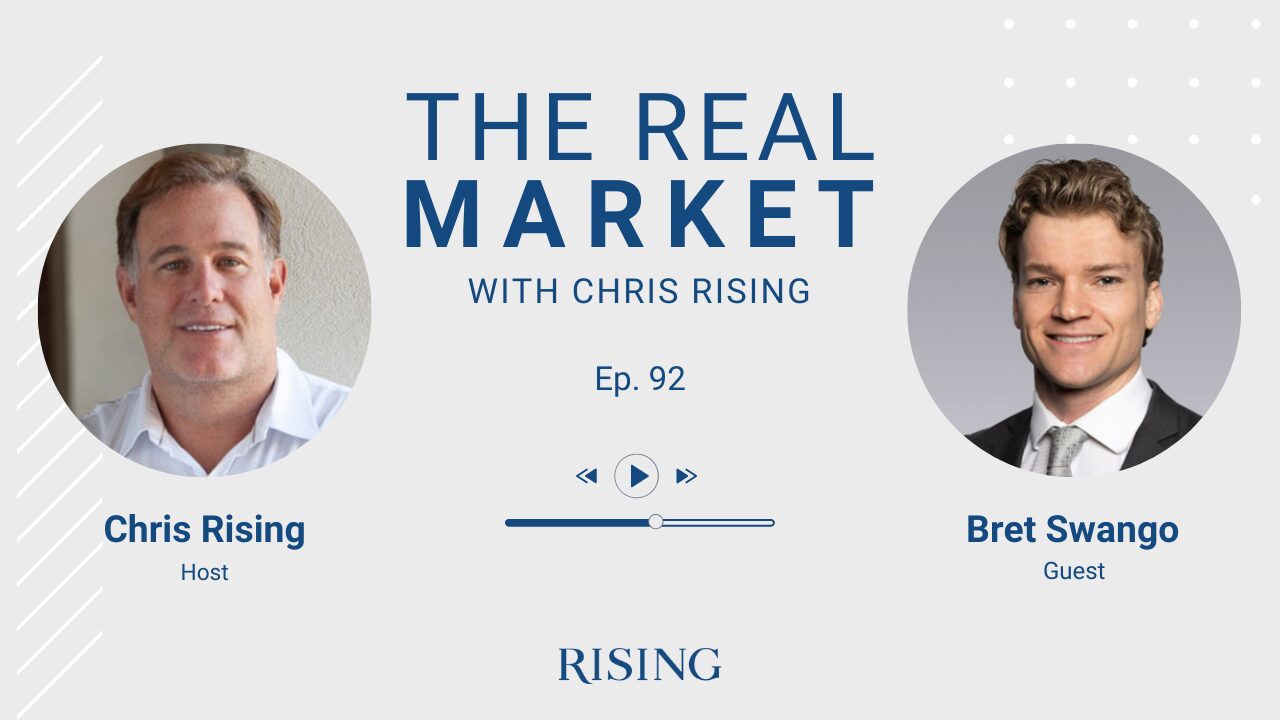
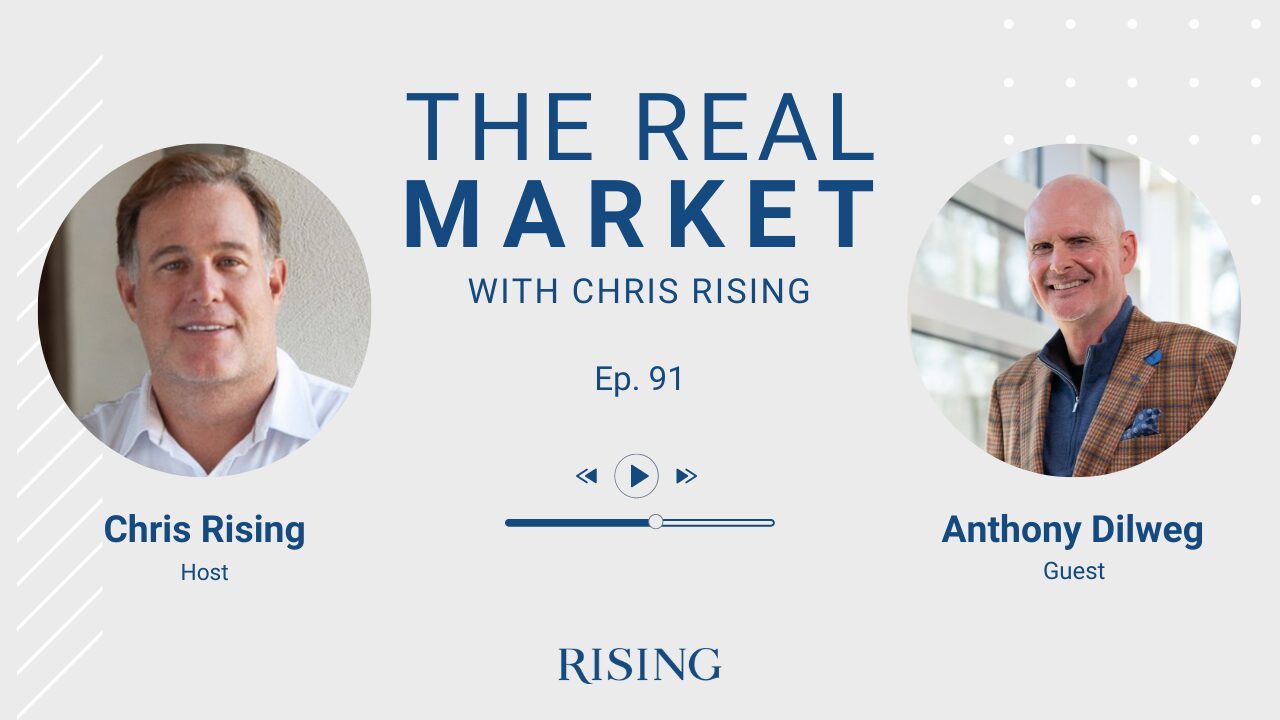
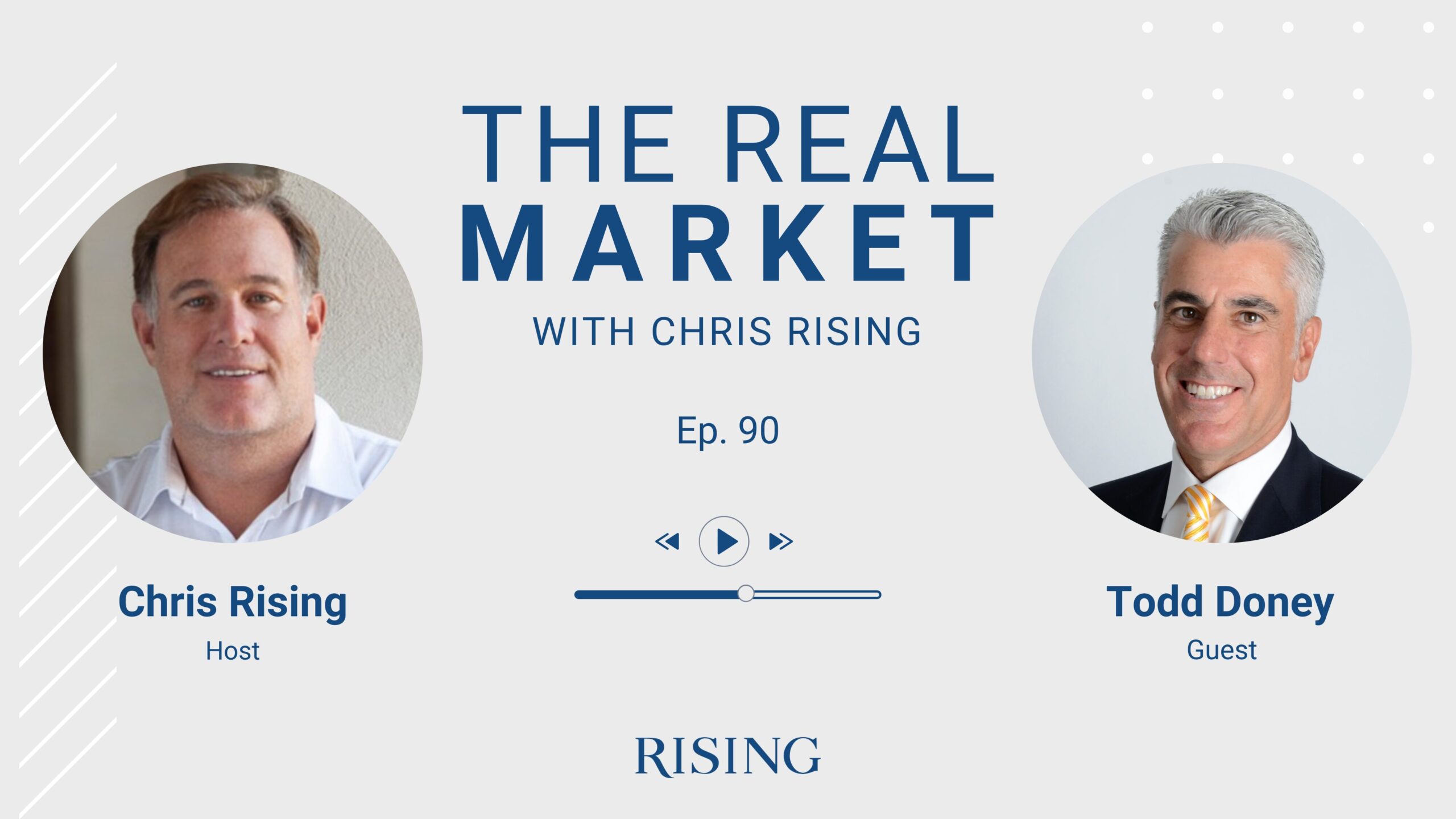
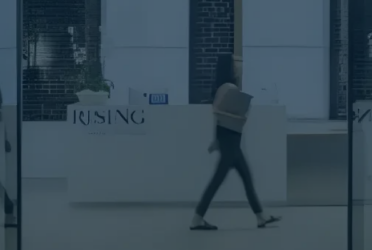
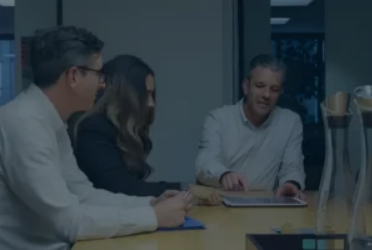
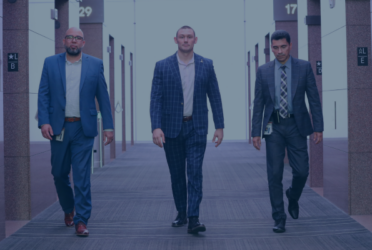
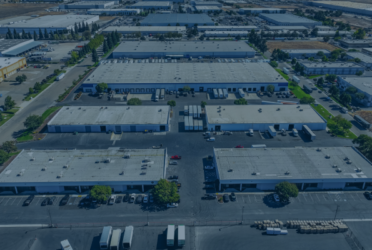
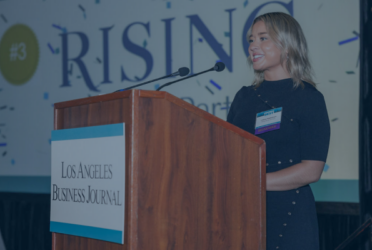
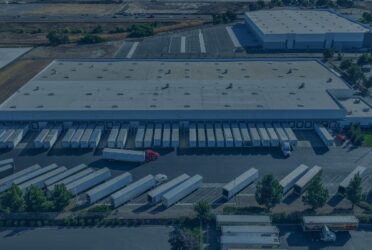
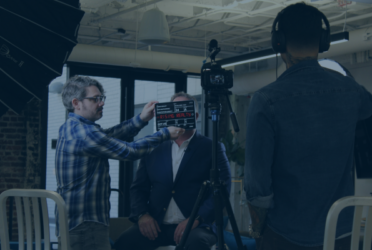
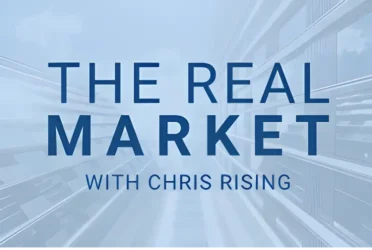 Podcast
Podcast